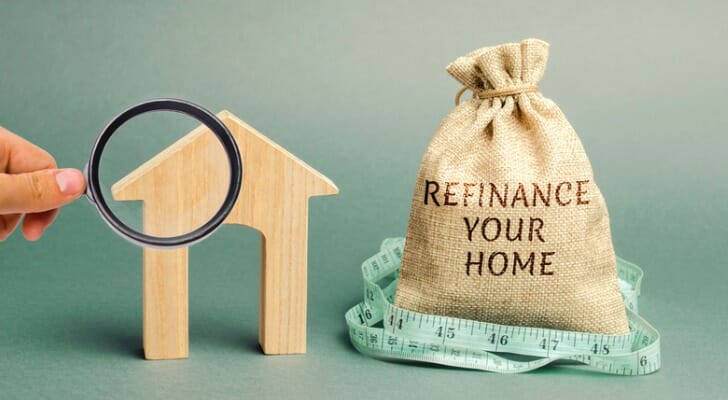When you buy a home or refinance your mortgage, closing costs can run thousands of dollars. However, there is a way to eliminate the out-of-pocket cost when getting a new mortgage. With a no-closing-cost refinance, your interest rate increases by a small amount in order to cover the costs of your mortgage. Here’s how the no-closing-cost refinance works and how to decide if one is right for you. You may want to consider working with a financial advisor who can help you with all the big financial decisions you face, including refinancing your home.
Reasons to Refinance Your Home
People choose to refinance their homes for a variety of reasons. Typically, those refinancing do so to lower the interest rate, reduce the monthly payment or pull out cash from their equity. Here are a few of the most common reasons why people refinance their homes:
- Reduce the interest rate
- Shorten or extend the length of the loan
- Switch the type of loan
- Eliminate mortgage insurance premiums
- Remove a co-signer
- Home remodel or addition
- Pay for college tuition
- Buy a second home
Regardless of the reason to refinance, many want to learn how to save on their closing costs because they’ve already paid these costs to close on their first mortgage. Having high closing costs can also eat into the benefit of refinancing if you’re looking to take cash out of your home’s equity.
Typical Closing Costs of a Mortgage
Getting a new mortgage comes with certain expenses that cover the costs of refinancing the loan. The fees often vary based on the size of the loan, the type of mortgage and where the home is located. Here are the typical costs that homeowners incur when refinancing a mortgage.
- Application fee
- Appraisal
- Attorney fees
- Courier fee
- Credit reporting fee
- Escrow fees
- Flood certification
- Loan origination fee
- Prepaid escrow funds
- Prepaid daily interest
- Recording fee
- Title insurance
- Underwriting fee
Additionally, if you get a VA, FHA or another type of government loan, you may be required to pay a funding fee. These fees generally range from 1% to 4% of your loan amount.
How a No-Closing-Cost Refinance Works

When you view mortgage rates, they are usually quoted with 0, 1 or 2 points. In mortgage terms, “points” are a percent of the amount borrowed. The more points that you pay, the lower your interest rate is throughout the term of the loan. In other words, when you pay points, you are “buying down” your interest rate.
For example, a $300,000 mortgage with 2 points has a cost of $6,000 in addition to the closing costs described above.
One way to reduce the closing costs and get a “no-cost” mortgage is to increase your interest rate. Instead of paying points, you are receiving a lender credit in exchange for paying a higher rate on your mortgage. These lender credits reduce or eliminate the out-of-pocket closing costs that are incurred when refinancing your mortgage.
If you want to keep your interest rate lower, you can roll your closing costs into your new mortgage instead. Your mortgage balance will increase by the amount of the closing costs, but you won’t have to pay anything extra out of pocket. By financing your closing costs, your payment may increase a few dollars extra, but you won’t have the big expense of paying for closing costs out of your cash.
When to Use a No-Closing-Cost Refinance
The decision of whether or not to do a no-closing-cost refinance depends on how long you play on staying in the home and if you may refinance again soon. Typically, it takes 5-to-7 years to break even on paying closing costs for a mortgage. If you’ve found your “forever home” and are able to lock in a low rate, it may make sense to pay points and cover the closing costs out of pocket.
However, if you’re like the average homeowner, you’ll move or refinance every few years. For these homeowners, it makes sense to do a no-closing-cost refinance because they won’t have that mortgage long enough to break even on the expense.
Examples of when it makes sense to do a no-closing-cost refinance include:
- You bought a starter home and plan to upgrade to something larger when you start a family.
- Your job or profession may require you to move every few years to move your career forward.
- You don’t have the cash on hand to cover the closing costs.
- Your mortgage interest is high, and you’d like to refinance it if interest rates drop.
- You have an FHA loan and want to refinance into a conventional loan to eliminate mortgage insurance once you have enough equity.
- Your credit score is poor, and you’re building your credit score to qualify for better loan terms.
The Bottom Line

Getting a refinance on your mortgage doesn’t have to cost thousands of dollars out of pocket. Instead of paying for your closing costs upfront, you can pay a higher interest rate to cover the costs. This is an excellent strategy for homeowners who are strapped for cash or don’t plan on keeping this loan for a long time. While you’ll pay a slightly higher monthly payment, you’ll keep your cash on hand to invest, pay down debt or save for a rainy day.
Tips for Refinancing Your Mortgage
- A financial advisor not only helps with saving for retirement, but he or she can also offer advice on financial decisions like refinancing your mortgage. By working with an advisor, you can pick a mortgage that works with your budget and matches your other goals, like retirement, saving for college or getting out of debt. SmartAsset’s free tool matches you with up to three financial advisors who serve your area, and you can interview your advisor matches at no cost to decide which one is right for you. If you’re ready to find an advisor who can help you achieve your financial goals, get started now.
- When you refinance your mortgage, it pays to evaluate your options to see how they’ll affect your monthly budget. Our mortgage calculator estimates your monthly payments based on your loan size, term and interest rate. It’s easy to create different scenarios to compare your loan options before deciding which loan to choose.
Photo credit: ©iStock.com/dusanpetkovic, ©iStock.com/Daenin Arnee, ©iStock.com/Andrii Yalanskyi
